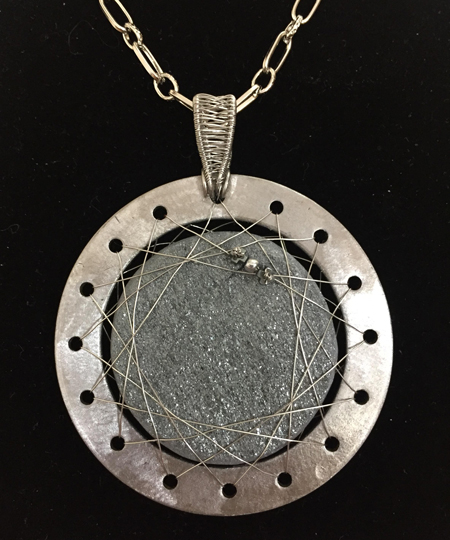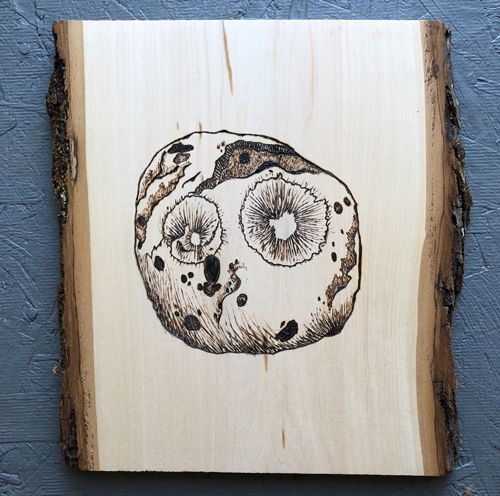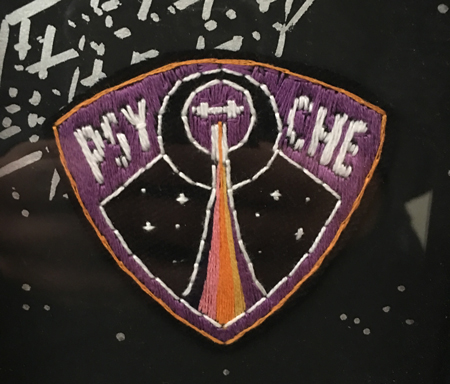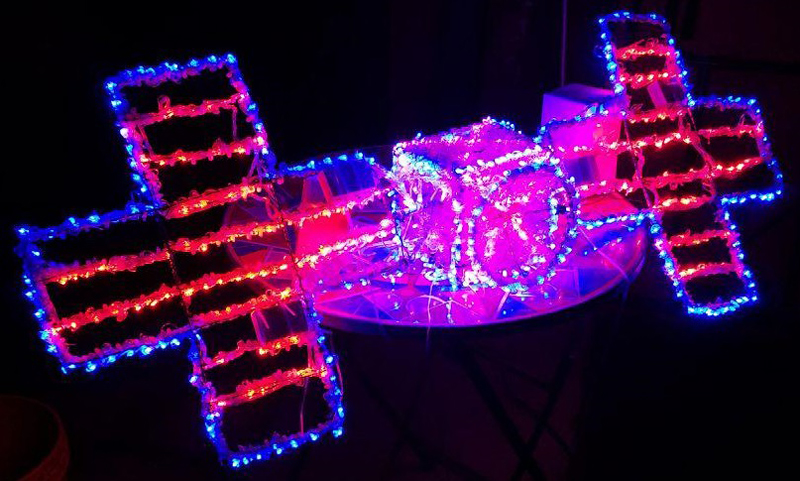What would it be like to have an up-close and personal look at the ancient, discarded core of a failed planet? Undergraduate students have a chance to explore this mystery through creative works of art inspired by an upcoming mission to a metal asteroid.
“One thing I’ve been interested in for a very long time is how to make a more fruitful collaboration between art and science. I think that the creative process is very similar,” said Lindy Elkins-Tanton, a planetary scientist at Arizona State University (ASU) in Tempe and principal investigator of NASA’s Psyche mission. The mission will be the first to explore a metal asteroid called 16 Psyche that is thought to be the leftover core of a planet that never formed.
“I think that it’s misunderstood largely in the scientific community how much deep information can be transmitted by art.”
When NASA challenged the Psyche mission scientists to come up with a better student collaboration program, Elkins-Tanton and her team focused on the potential of creative art.
“I think it’s misunderstood by the general public, by people outside of the field, how much creative thought has to go into imagining what might create a natural process in whatever science that you’re studying,” she said. “And I think that it’s misunderstood largely in the scientific community how much deep information can be transmitted by art.”
That’s how the Psyche Inspired program was born. “It’s a creative art intern program which is part of the Psyche mission student collaboration program,” Elkins-Tanton said.
For the past 2 years, undergraduate students from around the United States have collaborated with mission scientists to create art that goes beyond traditional expressions of science. Fewer than half of the students are artists by training. Most study science, engineering, or the humanities.
“We’ve had original music composed for us,” Elkins-Tanton said. “We’ve had sidewalk chalk art and paper art and videos. Just an entire range of things you might imagine.”
Each year, the program culminates in an exhibition showcasing the artists’ creative works. The second annual Psyche Inspired Showcase took place on 4 April at ASU.
The mystery and first-of-its-kind nature of asteroid 16 Psyche inspired student artists to create the pieces seen below. Explore their artwork and get your own creative juices flowing.
Transfer, Acrylic Paint

“This piece explores the transfer of information between the asteroid Psyche and the Earth,” artist Rachel McNeil explains. McNeil, an environmental sustainability management major at Emory University in Atlanta, Ga., created her work with acrylic paints. Earth is represented in blues and greens, whereas Psyche is seen in oranges and browns. McNeil said she chose to not focus on what Psyche might possibly look like. Instead, text detailing what we know about the metallic asteroid surrounds the two planetary bodies in white acrylic.
Psyche String Theory, String Art

This creative work depicts what 16 Psyche might look like by stringing yarn from pin to pin. The different colors of string, each one in the Psyche mission color palette, give definition to the asteroid’s likely rough surface and two major impact craters. Angela Wroblewski, an astronomy and physics major at the University of Maryland in College Park, said of her artwork, “My piece, a jumbled mess of string, is similar to the jumbled mess of metal that makes up the Psyche asteroid.”

Orbit, Lapidary
Artisan Stacy Woodruff created a miniature Psyche and spacecraft you can wear around your neck. Woodruff, a public service and public policy major at ASU, created the pendant using a rough-cut piece of specular hematite suspended on stainless-steel wire. A miniature Psyche spacecraft hangs above the asteroid’s surface. The entire pendant, as well as the frame and chain, is metal rich. “I chose these materials because they contain high levels of iron, reflecting our predictions for 16 Psyche’s composition,” Woodruff explained.
Parts and Pieces, Wood and Woodburning

Although 16 Psyche has no trees, Olivia Ferrel felt that woodburning could be a unique way to view the asteroid. “This is a new medium for me,” Ferrel said about the piece, “but I felt that it would push me artistically and help me to explore the relationship between nature and technology.” Ferrel is a public service and public policy major at ASU. She used a tool with a heated metal tip to burn the asteroid’s likeness, the spacecraft design, and the names of her fellow Psyche Inspired interns onto wood slabs.

Psyche Patch, Embroidery
As mission scientists look to the future for answers about 16 Psyche, this creative work invokes missions of NASA past. The asteroid sits front and center on the patch with the spacecraft overtop. A glowing trail represents Psyche’s long journey toward the unknown. Miguel Montañez, an interdisciplinary studies major at ASU, embroidered this patch of the Psyche mission logo by hand in the classic style that NASA used to use for mission patches.
Heavy Metal Light Show, Wire and LED String Lights

This model of the Psyche spacecraft would shine in the darkness of space. ASU drawing major Chris Vasquez crafted Psyche’s central body and large, plus-shaped solar panels out of strings of LED lights. Invisible wires hold the lights in place and suspend the model in the air. Vasquez was “inspired by festive holiday light sculptures,” he wrote in the artwork’s description. “I wanted to create something reminiscent of those while keeping true to the design of Psyche.”
Psyche in Orbit, Stoneware and Iron Thermite Glaze

This 0.6-meter round platter invokes the color, composition, and texture of 16 Psyche’s surface. The platter is made of ceramic stoneware that artist John Domenico glazed with a thin layer of iron. “I felt that I had a unique opportunity to explore a glaze that utilizes the thermite reaction to create a surface that is primarily raw iron,” said Domenico, a materials science and ceramics major at ASU. “The texture on this platter is a product of the thermite reaction and is an interpretation of an iron body in space.” The colors on the black rim allude to the Psyche spacecraft.
Flipping Through Psyche, Colored Pencils and Paper

“This cute, cartoon-like flip book depicts the spacecraft’s journey to Psyche,” said Angela Wroblewski, who created this work with colored pencils and paper. The sequence of hand-drawn images depicts three stages in the spacecraft’s journey: its departure from Earth, its gravitational assist from Mars, and its approach to Psyche. It gives a brief glimpse at how far Psyche will go and how far it will take us.
Stimulating the Imagination
The first 2 years of Psyche Inspired were a great success, Elkins-Tanton said, and each class of interns created truly exciting art that brought life to a cold metallic world. The Psyche mission team will be sending out a call for the next class of artist interns late this summer. The Psyche mission will launch a little over 3 years from now and will spend another 3 years traveling to its new metal home.
“I think that there’s something really stimulating to the human imagination about going to an object that we really don’t know what it is,” she said. “We’ve never seen it as more than two pixels in the Hubble Space Telescope.”
“There’s something about this object that gets people thinking,” she said.
—Kimberly M. S. Cartier (@AstroKimCartier), Staff Writer
Citation:
Cartier, K. M. S. (2019), Metal asteroid inspires works of art, Eos, 100, https://doi.org/10.1029/2019EO123543. Published on 10 May 2019.
Text © 2019. The authors. CC BY-NC-ND 3.0
Except where otherwise noted, images are subject to copyright. Any reuse without express permission from the copyright owner is prohibited.

